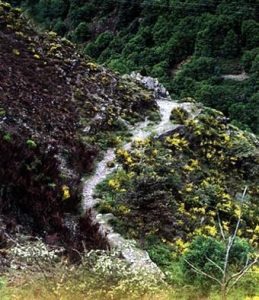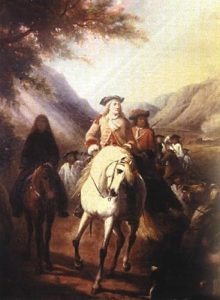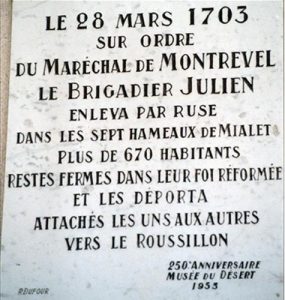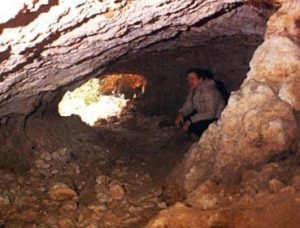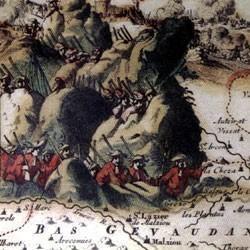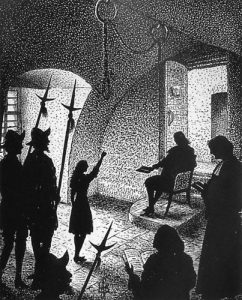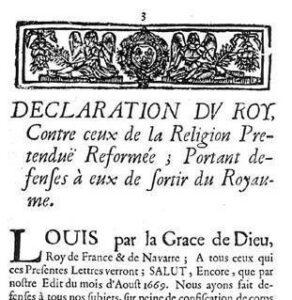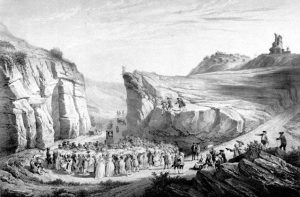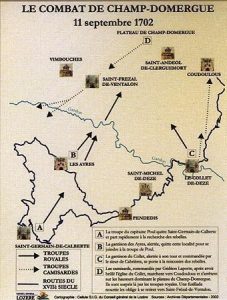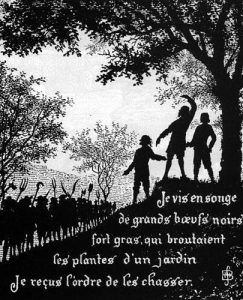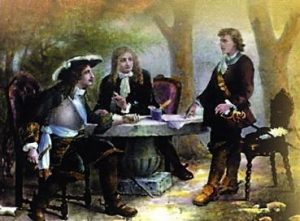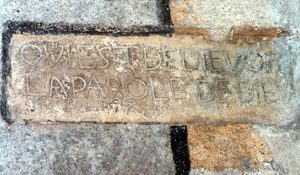The word "camisard"
The word « camisard », given to the Cévennes rebels by their enemies, may have two origins :
- camise, meaning a shirt (chemise), worn by the rebels over their clothes,
- camus, meaning paths (chemins). Due to their good knowledge of the area and of hidden paths, the camisards were able to catch royal troops unawares.
But the rebels called themselves “Children of God” (Enfants de Dieu).
Catholics and such Protestants as were opposed to the armed rebellion also called them “fanatics”.
In those days the Cévennes region extended as far as the Languedoc plain, and in the 18th century the war was referred to as the « Cévennes war » and not the « war of the camisards ».
Who were the camisards ?
42% of them were Cévennes peasants and 58% were rural craftsmen. Three quarters of the latter worked as wool carders, combers or weavers.
Not a single ‘gentleman’ featured among the camisards, i.e. no man trained in the art of warfare. Their contemporaries were so astonished by the lack of noblemen participating in the rebellion that they wrongly presumed that protestant gentlemen of the Refuge movement had come back to the Cévennes to plan operations. Jean Cavalier, one of the most amazing leaders, was an apprentice baker.
There was no notion of one single army or of one and only leader, but every region had its own permanent organisers and its own occasional soldiers.
The Camisard leaders
Most of the leaders were very young. Jean Cavalier was aged 21 when he became troop commander and Rolland was 22.
The leaders divided their troops into small units, each responsible for a region of the Cévennes.
Gédéo Laporte and then Salomon Couderc together with Abraham Mazel were in charge of the Le Bougès and Mont Lozère areas : this where the uprising began.
Henri Castanet (1674-1705), a former Aigoual forester, was in charge of Mont Aigoual.
Pierre Laporte nicknamed Rolland (1680-1704) led operations in the Basses-Cévennes, Miallet and Lassalle areas.
Jean Cavalier (1681-1704) fought in the plains of Bas-Languedoc between Uzès and Sauve.
The troops were independent but might unite for specific attacks after which they would separate once more. The camisards could go from troop to troop without problem. The flexibility of the rebels’ organisation and their decentralization, as well as their knowledge of the area were their real strength. As soon as the fight or the ambush was over the fighters would blend with the population. The camisards practiced a kind of guerrilla warfare. But they fought for religious beliefs rather than political ideals.
The role of the 'prophets'
Abraham Mazel’s prophesy triggered off the uprising. It was his prophesy again that inspired the management of the war and the development of operations. Attacks were organised following a prophet’s inspiration and commands. The prophets played a major role in the war. The main prophets were :
- Esprit Séguier
- Abraham Mazel
- Elie Marion
- Jean Cavalier, a very well-known prophet as well as troop leader.
Feeling they were led by God’s Spirit, peasants without any military training felt invincible. They had no feeling of inferiority towards the royal troops. They rushed towards their enemies instead of running away as so often happens in the case of popular uprisings. They marched with determination, singing psalms at the top of their voices, especially psalm 68, also called “the battle psalm” : “Let God now appear…” (Que Dieu se montre seulement…).
Faced with such determination, the royal troops simply broke up.
Increased violence
The camisards did hot hesitate to burn down Catholic churches and kill parish priests. They spread such dread that priests fled from their parishes and took refuge in the cities.
The reason for such violence was that the priests forced new converts to attend mass in Roman Catholic Churches and denounced those who refused, to the administrator Basville. This was the camisards’ response to the violence with which the Protestants were treated.
Basville’s reaction was to torture camisard leaders and increase pressure on the people. Violence increased as atrocities were committed on both sides : massacres in Catholic villages such as Fraissinet-de-Fourques, Valsauve and Potelières by camisards, and Basville’s deportation of the Mialet and Saumane village populations suspected of supporting Rolland’s troops. Then, with the king’s consent, the« Burning of the Cévennes » (« Brûlement des Cévennes ») which destroyed 466 hamlets and moved away the whole population during the autumn of 1703.
In addition of this, some Catholics, disappointed with the royal troops’ inefficiency, organised groups of partisans called “white camisards” or “cadets of the Cross”. These soon began to loot, thus increasing disorder.
The whole country was put to fire and sword.
The population's support
A key factor was complicity with the local population. The men took part in military operations. Thus, in the case of Cavalier’s troops, numbers could increase from a few dozen permanent soldiers to hundreds or even thousands of men. As soon as the fight was over, they would return to their fields.
The population also provided food and ammunition stored away secretly. This is why field marshal de Montrevel was authorised to launch the operation “Burning of the Cévennes” in 1703, thus depriving the rebels of their resources and terrifying the people. The exposure of Cavalier’s secret storage places was a calamity causing him to surrender.
A sacred war
Unlike most popular rebellions, the uprising was not founded on economic grounds. The Camisards first resorted to weapons to punish their most relentless persecutors, such as Father du Chayla, and also to have Protestant worship re-established.
Meanwhile the Protestants organised secret gatherings with the preaching prophets. According to camisard Jacques Bonhonnoux’s memoirs, Jean Cavalier was the best-known prophet. Bonhonnoux also made mention of eight other preachers who succeeded each other in joining Cavalier’s troops. He mentioned readers and precentors as well, psalm singing playing a major role in the war. The local population came from everywhere to attend worship. The spiritual role of the camisards kept a very strong link with the Cévennes Protestant population.

